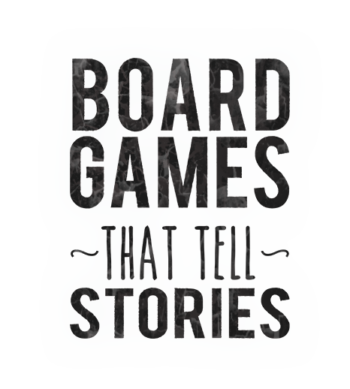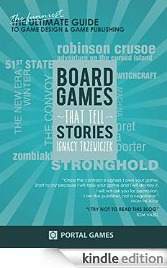Factions, scoring and recurrence…
In the previous post I presented four factions that you’ll find in Imperial Settlers. I believe they are very thematic, they’ll inspire your imagination and along with the artwork they’ll make you want to play the game. But let’s face it – thematic descriptions, superb art, words that make your imagination run like crazy can only do one thing – make you sit to the table and give it a try.
To make you play the game over and over designer need to try harder and give you much more than just cute factions. Cool blog posts are not enough, I know that. Today I’ll show you what I have up in my sleeve and why I believe you will play this game over and over…
Different scoring methods
Factions need to work differently. And by work differently, I mean score differently.
You play to win the game, right? You build locations, you gather resources, you make many actions and you do all that shit but it all boils down to one – you, sir want to score points. Playing game means trying to score points, over and over.
Different factions means different ways of scoring.
It was easy with Rome. I designed cards that change stone resource into Victory Points. I also made cards that awarded player every time he or she builds a Rome Location. That way – with every new designed card – I was slowly building Rome scoring mechanism. It was like creating snowball effect (and trying to control it). With building more and more locations Rome was getting stronger and scored more and more points. It was a great feeling to play and to score with Rome. Theme, checked. Rules, checked. Move on…
Barbarians needed something different. I connected their scoring methods with war. I let them score each time they make Raze action. I let them change spoils for a really big Victory Points. I let them earn when they build black (war) locations. It was all about war. Raze, get spoils, win the game. Theme, checked. Rules, checked. Move on…
Egypt needed something different. Since the very beginning I wanted them be crazy rich and on the other hand, I was balancing it with a difficult scoring. I gave them many tricky cards, and not too much straightforward, easy scoring options. I gave them this card that gives you Victory Points only if you’ve just earned Victory Points. This one that let’s you score on opponent card. This one that let’s you activate any of your cards again (and score that way again)… From the very beginning it was a dark magic faction, on both theme and rules level. You have to contrive. But if you do contrive well, you will score a lot… Theme, checked. Rules, checked. Move on…
Japanese of course needed something totally different… I made them flexible. They can change food into Victory Points. They can score when make a Deal. They score when they have samurai. They score when they storage resources in chapel. They score in so many ways. You will never say your draft of cards sucked – you always have so many options to score…. Theme, checked. Rules, checked. Move on…
Recurrence
The real problem I faced here was – how to make this faction work this way on regular basis. How to ensure player that if he or she plays Barbarians, he or she will get those cards that let score in particular way. That’s the moment when math had to appear on the table. It was the moment when story telling Ignacy had to change a hat and do some boring stuff. And you know what? It went quite smooth and wasn’t that scary.
I divided cards in the Faction decks in 3 categories. Super important cards. Characteristic cards. Twisting cards.
Super important cards are cards like Village in Barbarians deck (it gives them more workers) or like Pyramids in Egypt deck (gives them Stone and Gold). Without these super important cards particular faction looses a little bit of its power. In each deck I choose 3 such a cards and I put 3 copies of each into deck. This makes 9 cards that are like commons for that faction. You are likely to have at least one or two of them, when you play.
Characteristic cards are mostly scoring cards. They show character of Faction and let you score points. These are cards that work together perfectly and let you build super fun combos. I choose 6 of them and I put 2 copies of each in the deck, to give you bigger chance to draw them. That way we had 12 cards in the deck that build character of the faction and let you score (in most cases).
9 super important cards and 12 characteristic cards makes 21 cards, cards that work together and build recurrence in the faction. With this system I know that if you play Barbarians you will probably draw Primeval Forest (it produces a lot of Wood and let you build cool Barbarian buildings). But if you don’t draw Primeval Forest you will probably draw Raid card (scoring for attacks) or Chapel (scoring by spending workers). Because of Deal part of each faction card, I also was able to lower luck element a little bit. Many Egypt cards give you Gold in the Deal field of the card. Most Rome cards give you stone in the Deal field, etc. That way recurrence was built. You play Rome and you build from stone. You play Barbarians and you burn. You play Japanese and you have lot of food…
And that is almost the end of the story of faction deck building, if not…
If not… You know, let’s count it. 9 super important cards + 12 characteristic cards… We are missing 9 cards. Twist cards.
And let me tell you about those 9 cards next week…


 I strongly believe that good board game is the one that tells a good story. You play it and suddenly you are sucked into it, you feel chills on the skin. Emotions grow. In a moment you defend castle. You hear roar of warriors. You smell boiling oil. You are into it.
That's how I design my games. I always want to tell a good story. I want players to be into it. As deep as possible.
I strongly believe that good board game is the one that tells a good story. You play it and suddenly you are sucked into it, you feel chills on the skin. Emotions grow. In a moment you defend castle. You hear roar of warriors. You smell boiling oil. You are into it.
That's how I design my games. I always want to tell a good story. I want players to be into it. As deep as possible.




Great piece.
I’ve seen you saved some bullets for future expansions. 😉